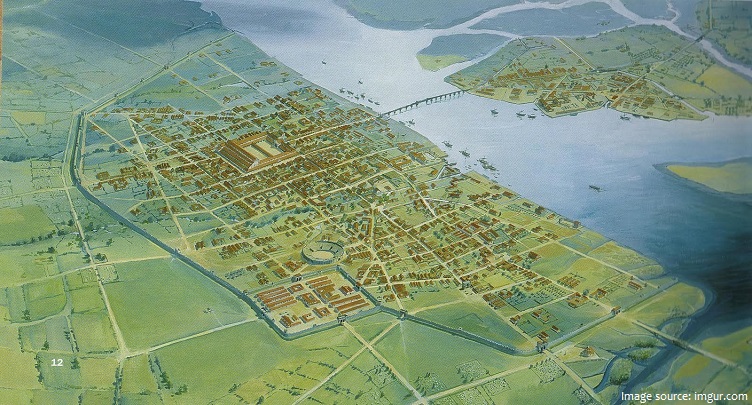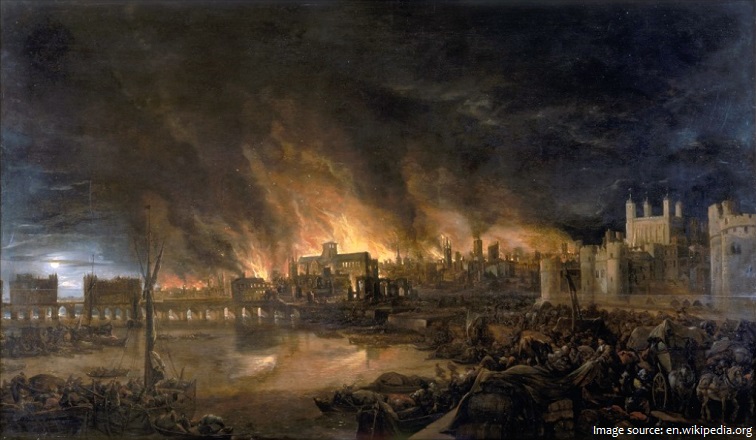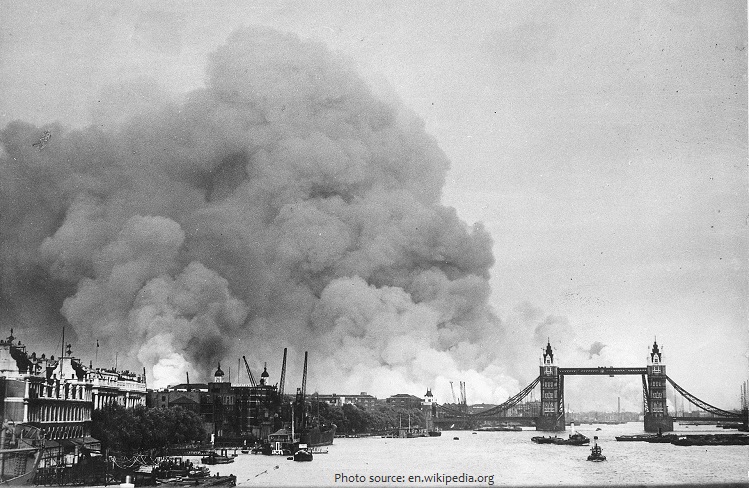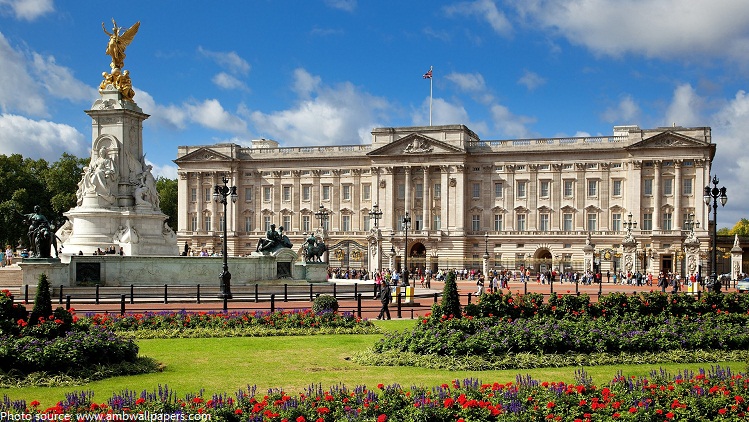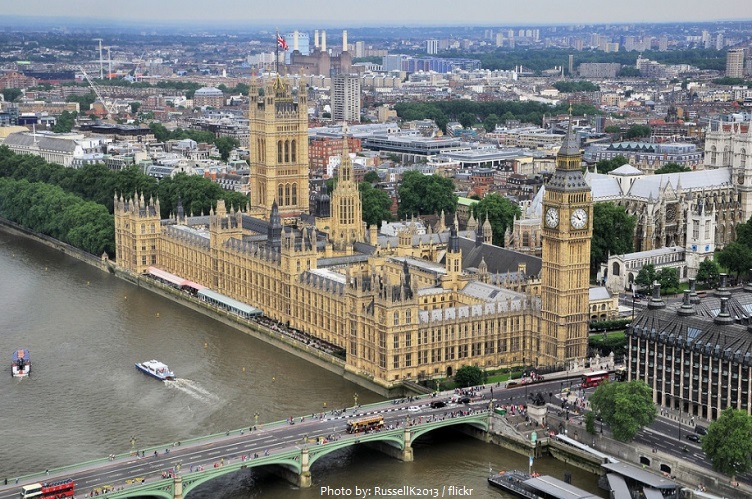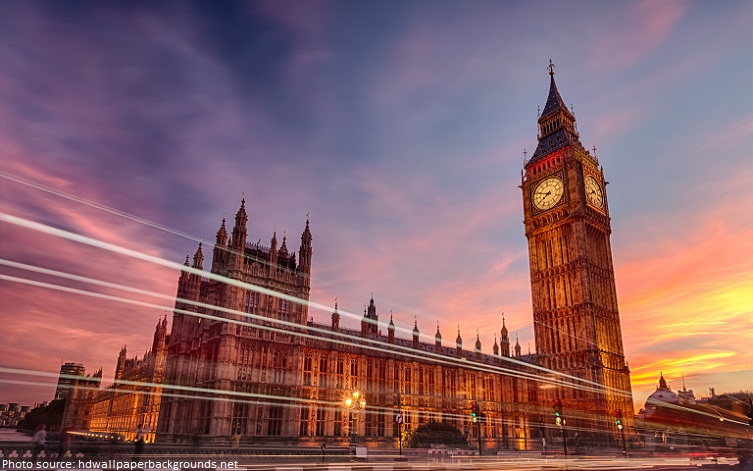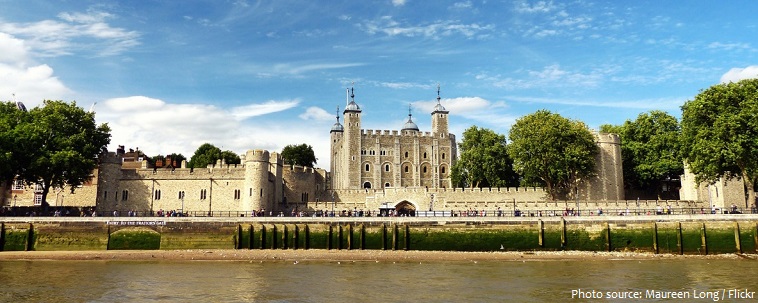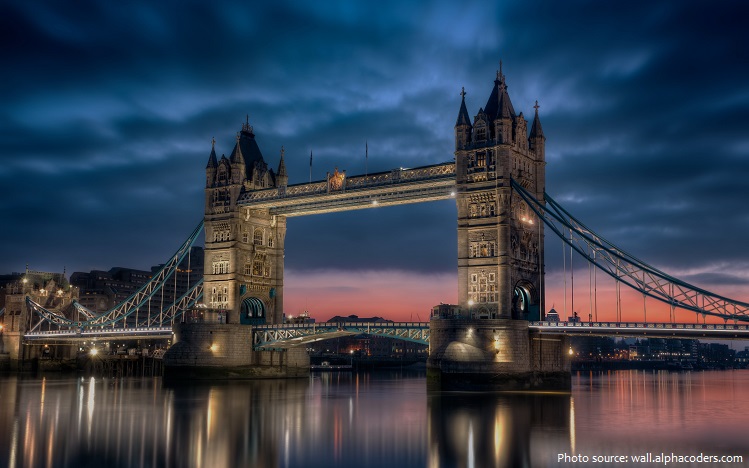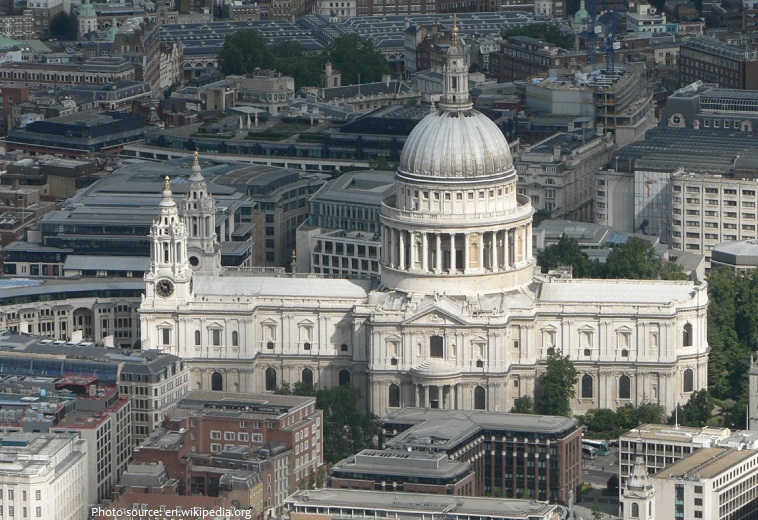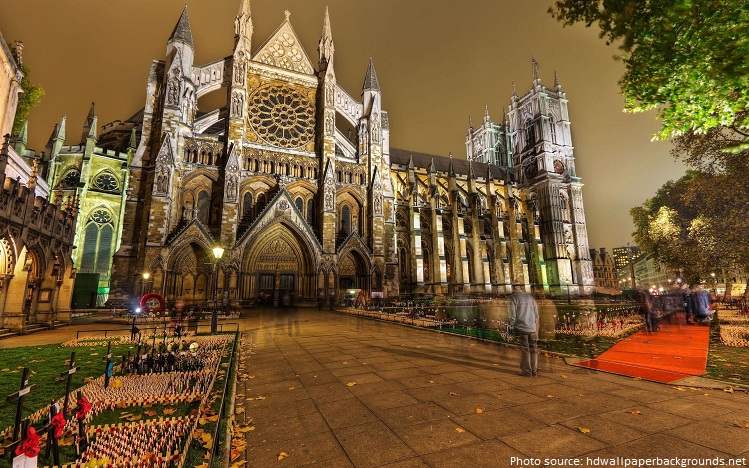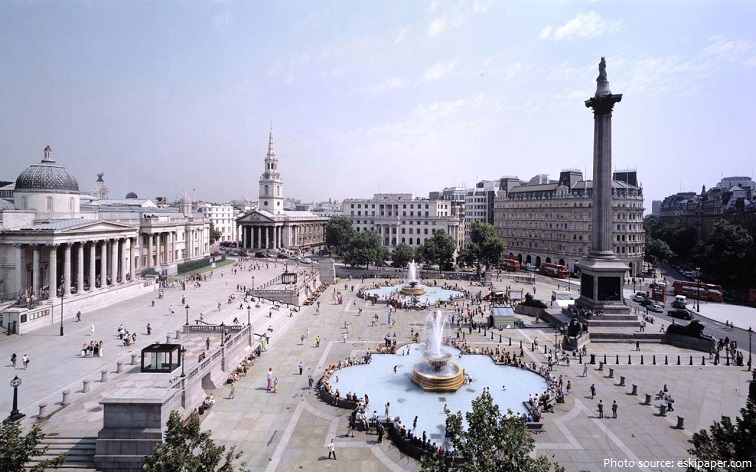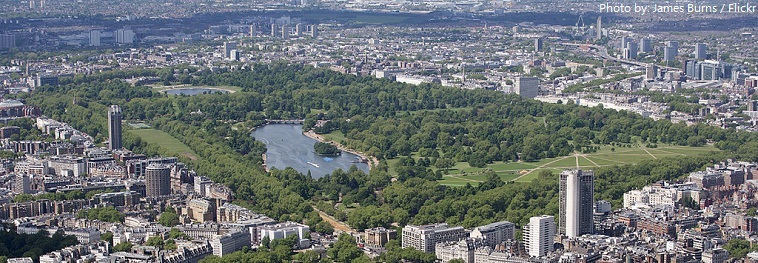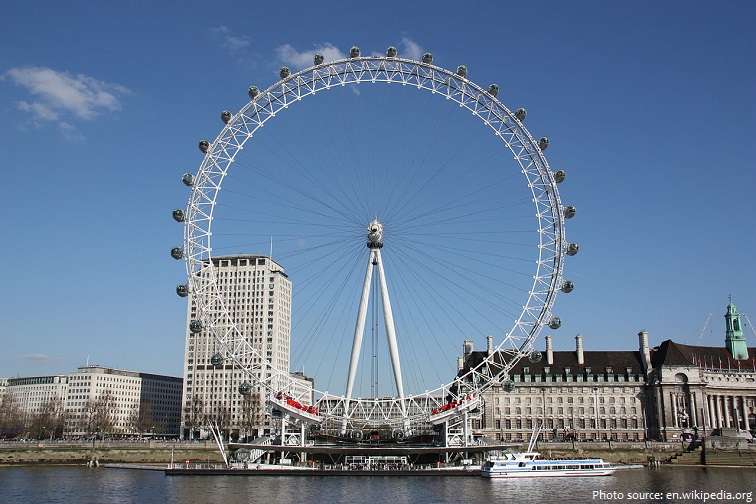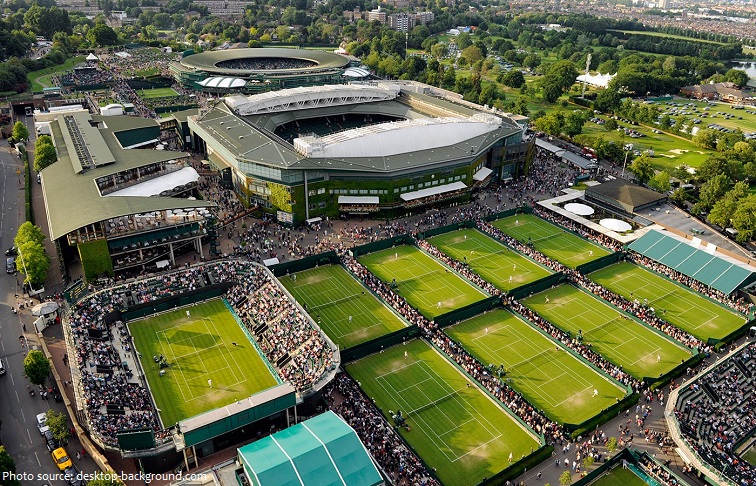London is the capital and most populous city of England and the United Kingdom.
It is situated on the River Thames in the south east of the island of Great Britain.
The population in 2016 is estimated to be as much as 8.63 million. London is the third most populous city in Europe, behind Istanbul and Moscow, and the 32nd most populous city in the world, slightly smaller than Chengdu, China.
The London region covers an area of 1,579 square kilometers (610 square miles).
The main topographical feature of London is the River Thames which crosses the city from the east to the southwest. The Thames has many tributaries, most of which are now underground as they flow through London.
It is thought that London in prehistoric times was merely a collection of scattered rural settlements. Spear heads and weapons from the Bronze and Iron Ages have been found around the Thames, and a recent archaeological dig near Vauxhall discovered evidence of a possible wooden bridge across the Thames around 3,000 years ago!
It was the Romans who were responsible for the city we know today as London. They invaded Britain in 43 AD, and soon afterwards founded the city of Londinium. It is thought that the original city was small – about the size of Hyde Park!
The first definite mention of London refers to the year 60 AD and occurs in the work of the Roman historian Tacitus, who wrote of a celebrated center of commerce filled with traders.
With the collapse of Roman rule in the early 5th century, London ceased to be a capital, and the walled city of Londinium was effectively abandoned.
From the 9th century, London grew again within its original Roman boundary, and during the Norman period it was connected by the Strand to a new political centre at Westminster.
By the 11th century, London was beyond all comparison the largest town in England.
The Great Fire of 1666 destroyed four-fifths of the city and more than 13,000 medieval, Tudor and early-17th century buildings were lost. As a result only a tiny proportion of pre-1700 London buildings and structures exist today.
Between 1714 and 1840, London’s population swelled from around 630,000 to nearly 2 million, making it the largest and most powerful city in the world.
The Victorian period found London expanding once more, as the population grew from around 2 million to 6.5 million.
Like many European cities, London was highly impacted by World War II – especially after the Blitz and other German bombings killed over 30,000 London residents and destroyed a large part of the city.
London’s population declined steadily in the decades after the Second World War, from an estimated peak of 8.6 million in 1939 to around 6.8 million in the 1980s.
London has one of the planet’s greatest concentrations of cultural attractions – from royal palaces to the people’s parliament, from Roman ruins to castles and cathedrals.
One of Britain’s most iconic buildings is Buckingham Palace, the official London residence and administrative headquarters of the reigning monarch of the United Kingdom. Buckingham Palace is located in the heart of London and surrounded by 2 royal parks.
The Houses of Parliament are officially known as the Palace of Westminster and it is the largest palace in the country. It contains over 1,100 rooms, 100 staircases and 4.8 kilometers (3 miles) of passageways, which are spread over four floors. It is illegal to die in the Houses of Parliament. We’re not sure what the punishment for this particular offence would be.
Big Ben is the nickname for the Great Bell of the clock at the north end of the Palace of Westminster and is usually extended to refer to both the clock and the clock tower. Every year the clock is
adjusted using an old English penny. If the clock is running fast, a penny is added to the pendulum. If the clock is running slow, a penny is removed from the pendulum. The clock gains 2/5 of a second a day from each penny added.
The Tower of London is a historic castle located on the north bank of the River Thames in central London. It is an internationally famous monument and one of England’s most iconic structures. Used variously throughout its history as a royal palace, an armoury, a prison, an execution chamber, a zoo, a barracks and a jewel house, this working royal castle offers a stunning insight into 1,000 years of history.
Tower Bridge is a combined bascule and suspension bridge in London. The bridge crosses the River Thames close to the Tower of London and has become an iconic symbol of London. Tower Bridge was built between 1886 and 1894.
St Paul’s Cathedral is an Anglican cathedral, the seat of the Bishop of London and the mother church of the Diocese of London. It sits on Ludgate Hill at the highest point of the City of London. The present Cathedral, the masterpiece of Britain’s most famous architect Sir Christopher Wren. It was built between 1675 and 1710.
Westminster Abbey, London church that is the site of coronations and other ceremonies of national significance. It stands just west of the Houses of Parliament. Over 3,300 people have been buried in Westminster Abbey over the centuries. This includes 17 British monarchs including King Henry V and all the Tudors except for Henry VIII. Other notable people buried at Westminster Abbey include Isaac Newton, Edward the Confessor, Charles Dickens, Geoffrey Chaucer, Dr. Samuel Johnson and Charles Darwin.
Piccadilly Circus and Trafalgar Square [photo below] are two of London’s best-known tourist spots. These famous squares lie not far apart and mark the gateways to Soho, London’s lively theater and entertainment district.
London’s Hyde Park is one of the greatest city parks in the world. Covering 142 hectares (350 acres) and with over 4,000 trees, a large lake, a meadow and ornamental flower gardens. Hyde Park was created in 1536 by Henry VIII for hunting.
The London Eye is a giant Ferris wheel located along the River Thames. The design is similar to an enormous bicycle wheel, with a central hub and spindle connected to outer and inner rims by cable spokes. It is over 200 times larger than the average bike wheel. The structure is 135 meters (443 feet) tall and the wheel has a diameter of 120 meters (394 feet).
The London Bus is one of London’s principal icons, the archetypal red rear-entrance AEC Routemaster being recognized worldwide. There are 8,600 buses in the whole fleet, operating on 700 routes, serving 19,000 bus stops.
The London Underground is the oldest underground railway network in the world. Many first-time visitors to the Tube are surprised to realize that despite its name, more than half of London’s Underground actually runs aboveground.
London attracted about 20 million international visitors in 2017, making it the world’s 3rd most visited city (after Hong Kong and Bangkok).
London is the most verdant city of its size in the world. Green spaces cover nearly 40% of Greater London: parks, squares, public gardens and cemeteries – in all, some 173 square kilometers (67 square miles).
Despite its reputation as being a rainy city, London receives less precipitation in a year than Rome, Bordeaux, Toulouse, Naples, Sydney and New York City.
The Championships, Wimbledon, commonly known as “Wimbledon“, is the oldest tennis tournament in the world, and is widely considered the most prestigious.
In 2012 London will become the first city to host the modern Summer Olympic Games three times.
London has a diverse range of people and cultures, and more than 300 languages are spoken in the region.
Traffic in central London moves at the same speed as horse-drawn carriages.
The Great Smog, which blanketed London for five days in December 1952, is estimated by some experts to have killed more than 12,000 people and hospitalized 150,000.
During the 18th century, you could pay your admission ticket to the zoo in London by bringing a cat or a dog to feed the lions.
During the outbreak of World War II, London Zoo killed all their venomous animals in case the zoo was bombed and the animals escaped.
On October 17, 1814, a three-story-high vat of beer exploded inside a London brewery and unleashed a tidal wave of porter that killed eight people in the neighboring tenements. It is one of history’s strangest disasters.
There are about 10,000 urban foxes living in London.
An estimated half a million mice live in the London Underground.
Around one fifth of all the gold held by the world’s governments in stored beneath the streets of London, that’s about $248 billion worth of gold!
Tokyo is the city with the most millionaires in the world but London has the most multi-millionaires and New York the most billionaires.


